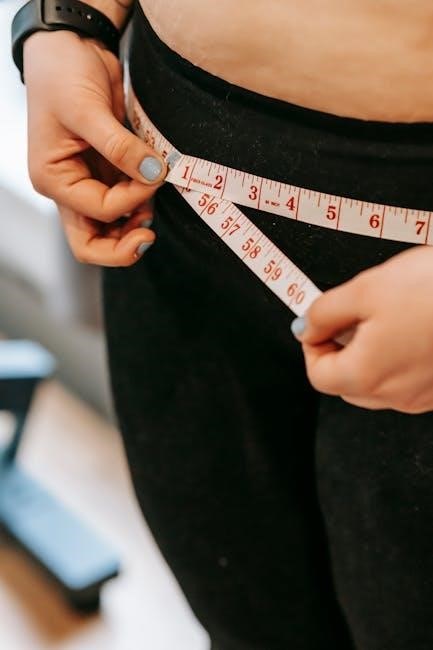Exercises for hip bursitis pdf provide guidance on managing symptoms, with
proper techniques
and precautions to avoid exacerbating the condition, ensuring a safe and effective rehabilitation process always.
Understanding the Importance of Exercise for Hip Bursitis
Exercises for hip bursitis pdf are essential for managing symptoms and promoting recovery. Regular exercise helps to reduce pain and inflammation, improve range of motion, and strengthen surrounding muscles. A well-structured exercise program can also help to prevent future episodes of hip bursitis. It is crucial to understand the importance of exercise in the treatment of hip bursitis, as it can significantly impact the effectiveness of rehabilitation. By incorporating exercises into daily routine, individuals can take an active role in managing their condition and improving overall health. With the guidance of a healthcare professional, individuals can develop a personalized exercise plan that meets their specific needs and goals, ensuring a safe and effective rehabilitation process. This understanding is vital for individuals to make informed decisions about their treatment and rehabilitation. Exercise is a key component of hip bursitis management.

Types of Exercises for Hip Bursitis
Exercises include stretching, strengthening, and aerobic activities to improve hip mobility and reduce pain, with various options available to suit individual needs and preferences always.
Stretching Exercises for Hip Bursitis
Stretching exercises are essential for hip bursitis, helping to reduce stiffness and improve range of motion. These exercises can be done in various positions, including lying, standing, or sitting. The gluteal stretch is a common exercise, where the affected leg is crossed over the other, and the hip is gently stretched. Another exercise is the piriformis stretch, which targets the muscle that runs from the base of the spine to the thighbone. Stretching exercises should be done slowly and gently, holding each stretch for 15-30 seconds and repeating 2-4 times. It is crucial to listen to the body and stop if pain occurs. Regular stretching can help alleviate symptoms and improve overall hip function, making it an integral part of hip bursitis management and rehabilitation. By incorporating stretching exercises into daily routine, individuals can experience significant improvements in hip mobility and reduced discomfort.
Strengthening Exercises for Hip Bursitis
Strengthening exercises play a vital role in hip bursitis rehabilitation, helping to stabilize the hip joint and improve overall function. These exercises target the muscles around the hip, including the gluteals, quadriceps, and hamstrings. Strengthening the hip abductors, which include the gluteus medius and minimus, is particularly important, as these muscles help to stabilize the hip and reduce pressure on the bursae. Exercises such as side leg lifts, clamshell exercises, and hip bridges can be effective in strengthening the hip muscles. It is essential to start with low-intensity exercises and gradually progress to more challenging ones, avoiding any activities that exacerbate the condition. By incorporating strengthening exercises into their routine, individuals with hip bursitis can experience improved hip stability, reduced pain, and enhanced overall mobility, making it easier to perform daily activities and maintain a healthy lifestyle with regular exercise.

Precautions for Hip Bursitis Exercises
Exercises require careful consideration, with attention to proper techniques and pacing to avoid exacerbating the condition, ensuring a safe and effective rehabilitation process with gentle movements always.
Modifying Exercises to Avoid Pain
Modifying exercises is crucial to avoid exacerbating hip bursitis, and individuals can do this by reducing the intensity or frequency of exercises. It is essential to listen to the body and stop immediately if pain occurs.
People can also modify exercises by changing the range of motion or using assistive devices to reduce strain on the affected hip. Additionally, exercising on a soft surface, such as a mat or carpet, can help reduce impact and discomfort.
Individuals should prioritize gentle, low-impact exercises and avoid activities that aggravate the condition, such as running or jumping. By making these modifications, individuals can continue to exercise safely and effectively, promoting healing and reducing the risk of further injury, and ultimately achieving a successful rehabilitation outcome with careful planning.

Sample Exercises for Hip Bursitis
Exercises include gluteal stretches and strengthening
activities to improve hip function and reduce pain always.
Gluteal Stretch Exercise
The gluteal stretch exercise is a common recommendation for hip bursitis sufferers, aiming to reduce tension in the gluteal muscles and improve hip mobility. This exercise can be performed by lying on your back with both knees bent and feet flat on the floor. The affected leg is then crossed over the other, with the ankle resting on the opposite knee. The stretch is achieved by gently pulling the knee towards the opposite shoulder, holding for 15-30 seconds and repeating 2-3 times. It is essential to focus on proper technique and avoid bouncing or forcing the stretch, as this can exacerbate the condition. By incorporating the gluteal stretch exercise into your routine, you can help alleviate hip bursitis symptoms and improve overall hip function, it is a simple yet effective exercise that can be done at home with minimal equipment.
Weight-Bearing Exercise for Hip Bursitis
Weight-bearing exercises are an essential component of hip bursitis rehabilitation, helping to strengthen the muscles around the hip joint and improve overall function. One example of a weight-bearing exercise is standing on the affected leg, with the other leg lifted off the ground. This can be done while holding onto a chair or wall for support, and holding for 10-15 seconds before switching legs. Another example is walking on a flat surface, focusing on proper gait and avoiding any activities that exacerbate the condition. It is crucial to start with low-impact activities and gradually progress to more intense exercises, listening to your body and avoiding any pain or discomfort. By incorporating weight-bearing exercises into your routine, you can help improve hip strength and stability, reducing the risk of further injury and promoting a healthy recovery, with regular practice and patience.

Rehabilitation Exercises for Hip Bursitis
Exercises for hip bursitis pdf provide a comprehensive guide to rehabilitation, focusing on gradual progression and proper techniques to ensure a safe recovery, with regular practice and patience always.
Phase 1 Exercises for Hip Bursitis Rehabilitation
Exercises for hip bursitis pdf outline a structured approach to rehabilitation, with phase 1 focusing on gentle mobilization and strengthening of the affected hip. This initial phase is crucial in restoring range of motion and reducing pain. The exercises are designed to be low-impact, minimizing stress on the affected joint. Patients are advised to start with short sessions, gradually increasing duration and intensity as comfort levels improve. It is essential to listen to the body and stop if pain persists, allowing for a gradual progression to more advanced exercises. A healthcare professional can provide personalized guidance, helping patients navigate the rehabilitation process and achieve optimal results. By following the exercises outlined in the pdf, individuals can take the first steps towards recovering from hip bursitis and regaining functional mobility. Regular practice and patience are key to a successful rehabilitation journey.
Phase 2 Exercises for Hip Bursitis Rehabilitation
As patients progress to phase 2, the exercises for hip bursitis pdf introduce more dynamic movements, aiming to enhance strength, flexibility, and functional ability. This phase focuses on weight-bearing activities, such as standing and balancing exercises, to improve proprioception and reduce the risk of falls. The exercises are designed to mimic daily activities, promoting a smooth transition to normal functioning. Patients are encouraged to incorporate resistance bands or light weights to increase the intensity of the exercises, further strengthening the surrounding muscles. A gradual progression of exercises is essential, allowing the hip joint to adapt to increased demands. By following the structured approach outlined in the pdf, individuals can expect significant improvements in their overall mobility and reduced discomfort, ultimately achieving a full recovery from hip bursitis. Regular practice and commitment to the rehabilitation program are crucial for optimal results.
